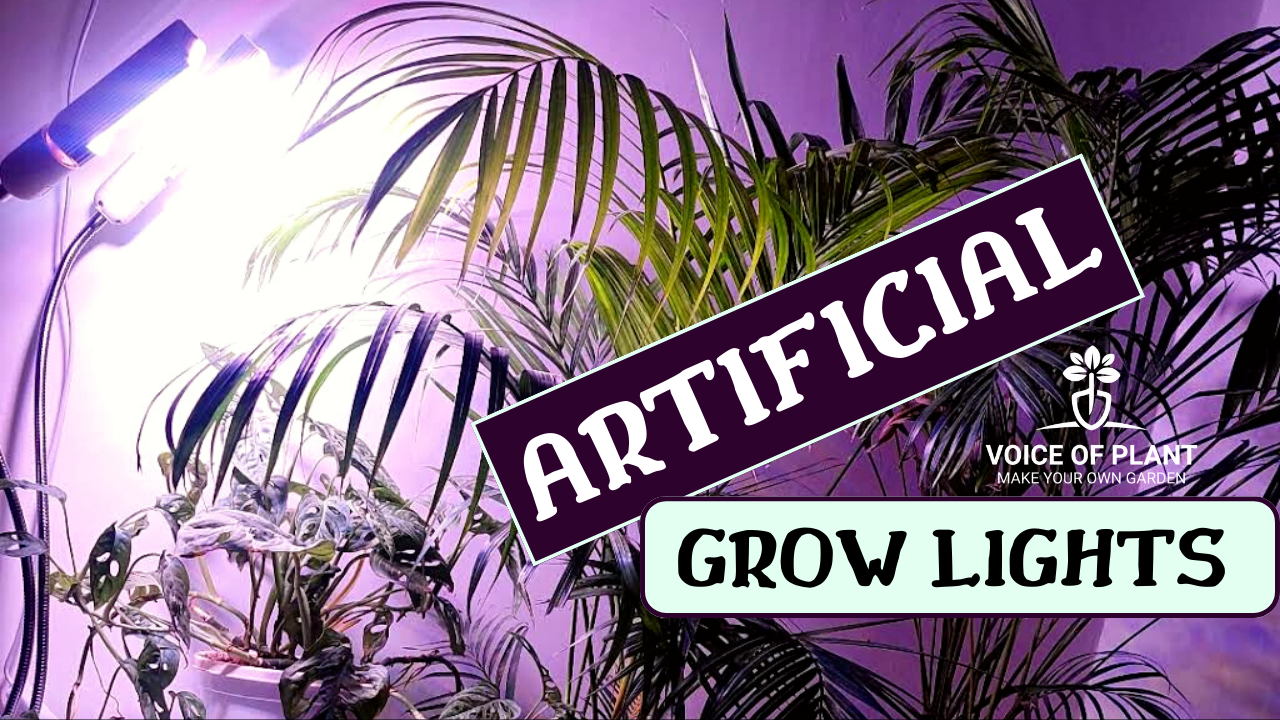क्या पौधे Artificial Grow Lights में विकसित हो सकते हैं?
दुनिया भर के विशाल और विविध परिदृश्यों में, जहां सूरज की रोशनी विभिन्न क्षेत्रों और मौसमों में भिन्न होती है, आर्टिफीसियल ग्रो लाइट का उपयोग पौधों के प्रति उत्साही लोगों के लिए गेम चेंजर बन गया है।
चाहे आप अनुभवी माली हों या बागवानी करना अभी शुरू किया है, घर के अंदर पौधों के पोषण के लिए कृत्रिम रोशनी की गतिशीलता को समझना महत्वपूर्ण है। आइए कृत्रिम ग्रो लाइट की अवधारणा और बागवानी में उनकी प्रासंगिकता का पता लगाते हैं।
पौधों के लिए आर्टिफीसियल ग्रो लाइट्स क्या है?
कृत्रिम ग्रो लाइट्स विद्युत लैंप हैं जिन्हें प्राकृतिक सूर्य के प्रकाश स्पेक्ट्रम का नकल करने वाले प्रकाश का उत्सर्जन करके पौधों के विकास को प्रोत्साहित करने के लिए डिज़ाइन किया गया है।
- जहाँ सूर्य का प्रकाश पौधों के लिए ऊर्जा का सबसे अच्छा स्रोत बना हुआ है, कृत्रिम प्रकाश उन स्थितियों में आवश्यक हो जाता है जहां प्राकृतिक सूरज का प्रकाश अपर्याप्त है, खासकर इनडोर बागवानी सेटअप में।
आर्टिफीसियल ग्रो लाइट्स के प्रकार:
आर्टिफिशियल ग्रो लाइट्स विभिन्न प्रकार की होती हैं, जिनकी सूची नीचे दी गई है:
1. फ्लोरोसेंट लाइट्स:
- लागत प्रभावी और ऊर्जा कुशल।
- छोटे और कोमल पौधों और कम रोशनी वाले पौधों के लिए उपयुक्त।
- दो मुख्य प्रकारों में उपलब्ध है: कॉम्पैक्ट फ्लोरोसेंट लाइट्स (सीएफएल) और ट्यूब फ्लोरोसेंट लाइट्स (टीएफएल)।
2. एलईडी लाइट्स:
- ऊर्जा-कुशल और लंबे समय तक चलने वाला।
- यह विभिन्न विकास चरणों के लिए उपयुक्त प्रकाश का स्पेक्ट्रम प्रदान करता है।
- कम गर्मी छोड़ते हैं, जिससे वे इनडोर बागवानी के लिए उपयुक्त हो जाते हैं।
3. हाई-इंटेंसिटी डिस्चार्ज (HID) लाइट्स:
- सभी विकास चरणों के लिए उपयुक्त, तीव्र प्रकाश उत्पन्न करता है।
- अधिक गर्मी पैदा करता है और अतिरिक्त वेंटिलेशन की आवश्यकता हो सकती है।
पौधों के लिए कृत्रिम प्रकाश का उपयोग क्यों करना चाहिए?
ऐसे कई कारण हैं जिनकी वजह से हमें कृत्रिम प्रकाश का उपयोग करना चाहिए। उनमें से कुछ नीचे सूचीबद्ध हैं:
1. अपर्याप्त धूप:
- सीमित सूर्य के प्रकाश में या कुछ मौसमों के दौरान, कृत्रिम रोशनी पौधों के विकास के लिए एक सतत प्रकाश स्रोत सुनिश्चित करती है।
2. इनडोर बागवानी:
- जिन लोगों के पास बाहर जा कर बागवानी करने का विकल्प नहीं है, उनके लिए कृत्रिम ग्रो लाइट्स इनडोर बागवानी को सक्षम बनाती हैं, जिससे बागवानी का शौक रखने वाले लोगों के को पूरे वर्ष पौधे उगाने का अवसर मिलता है।
3. बीज आरंभ:
- कृत्रिम प्रकाश बीज के अंकुरण और अंकुरों के शुरुआती विकास में सहायता करती है, जिससे स्वस्थ विकास के लिए आवश्यक प्रकाश मिलता है।
4. उगाने का विस्तारित मौसम:
- कृत्रिम रोशनी के साथ, आप लगातार फसल सुनिश्चित करते हुए, उगाने के मौसम को सामान्य धूप के घंटों से आगे बढ़ा सकते हैं।
पौधों के लिए सही आर्टिफिशियल ग्रो लाइट्स का चयन कैसे करें
सही आर्टिफिशियल ग्रो लाइट्स चुनते समय निम्नलिखित कारकों से सावधान रहना चाहिए:
1. प्रकाश स्पेक्ट्रम:
- अधिकतम वृद्धि के लिए विभिन्न पौधों को अलग-अलग प्रकाश स्पेक्ट्रम की आवश्यकता होती है।
- पूर्ण-स्पेक्ट्रम रोशनी जो प्राकृतिक सूर्य के प्रकाश के तरह होती हैं, अधिकांश पौधों के लिए उपयुक्त होती हैं।
2. तीव्रता और अवधि:
- अपने पौधों की विशिष्ट आवश्यकताओं के आधार पर प्रकाश की तीव्रता को नियंत्रित करें।
- कुछ को विकास के दौरान अधिक प्रकाश की आवश्यकता हो सकती है, जबकि अन्य को फूल आने के दौरान कम प्रकाश की आवश्यकता होती है।
3. ऊर्जा दक्षता:
- एलईडी लाइटें सबसे अधिक ऊर्जा-कुशल विकल्प हैं, बिजली की खपत कम करती हैं और कम गर्मी उत्सर्जित करती हैं।
4. लागत संबंधी विचार:
- प्रकाश की प्रारंभिक लागत, परिचालन लागत और जीवनकाल पर विचार करें।
- हालांकि एलईडी लाइटें पहले से महंगी हो सकती हैं, लेकिन उनकी लंबी उम्र और ऊर्जा दक्षता के परिणामस्वरूप समय के साथ लागत में बचत हो सकती है।
पौधों के लिए कृत्रिम ग्रो लाइट्स का उपयोग करने की युक्तियाँ
आर्टिफिशियल ग्रो लाइट्स का उपयोग करने के लिए निम्नलिखित युक्तियाँ को अपनाया जा सकता है:
1. सही दूरी बनाए रखें:
- पौधों से इष्टतम दूरी बनाए रखने के लिए रोशनी की ऊंचाई को समायोजित करें, जिससे उन्हें बहुत अधिक या बहुत कम रोशनी मिलने से रोका जा सके।
2. प्रकाश चक्र का पालन करें:
- विकास चरण के दौरान अधिकांश पौधों के लिए लगभग 12-16 घंटे और फूल आने के चरण के दौरान 8-12 घंटे प्रकाश प्रदान करके प्राकृतिक प्रकाश चक्र की नकल की जा सकती।
3. पौधों को घुमाएँ:
- यदि स्थिर प्रकाश का उपयोग कर रहे हैं, तो यह सुनिश्चित करने के लिए कि सभी भागों को पर्याप्त रोशनी मिले, पौधों को नियमित रूप से घुमाएँ।
निष्कर्ष:
आर्टिफीसियल ग्रो लाइट्स पौधों का शौक रखने वाले लोगों के लिए आवश्यक उपकरण हैं। वे आपको घर के अंदर पौधे उगाने में मदद करते हैं, भले ही आपके पास पर्याप्त धूप न हो। चाहे आप बीज बो रहे हों, बालकनी पर जड़ी-बूटियाँ उगा रहे हों, या एक इनडोर गार्डन रख रहे हों, पौधों के सफल विकास के लिए विभिन्न प्रकार की आर्टिफीसियल लाइट्स और उनका उपयोग करने के तरीके के बारे में जानना आवश्यक है। तो, अपने पौधों को रोशन करें, उन्हें फलने-फूलने दें, और बागवानी की सुंदरता का आनंद लें!
शुभ बागवानी !!
